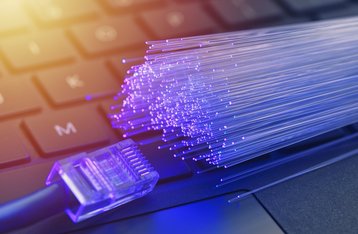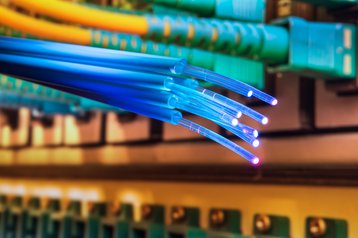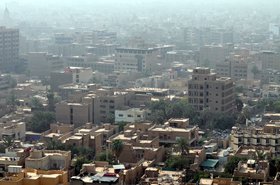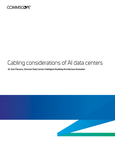Billions of kilometers of fiber optic cables circle the globe delivering the data and services required by businesses and consumers.
This vital element of digital infrastructure is under ever-increasing strain due to the growing amount of data being generated, exacerbated by the boom in popularity of artificial intelligence services over the last 18 months. It is estimated that by 2030, the amount of new data being created around the world will hit 181 zettabytes, almost double the 2022 level of 97 zettabytes.
For businesses looking to move large amounts of information, or those that require low latency solutions, securing necessary bandwidth is crucial, and as such many organizations are looking to unused, or dark fiber, to meet their needs.
Perhaps unsurprisingly, the dark fiber sector is growing fast. Figures from Stellar Market Research suggest that the global market was worth $6.19 billion last year, a figure that could rise to $14.38 billion by the end of the decade.
But what is dark fiber? And is it right for your business?
Out of the light and into the dark
Most business network connections are managed by Internet service providers (ISPs) through what is known as “lit fiber” – fiber connections that are operated using an ISP’s equipment and deliver a service such as ethernet.
ISPs are able to use the same parts of a cable to service multiple customers through a technique known as dense wavelength division multiplexing (DWDM), which enables businesses to share fiber managed by their network provider.
However, by only accessing part of a fiber cable, businesses can be limited in connection speed. Although lit fiber networks are now achieving speeds of up to 100GBPs, the amount of bandwidth available will be governed by the service agreement an organization has with their ISP.
Dark fiber sees businesses lease existing but unused connections from a network provider. Because the installation process for optical fiber cables is expensive, the networks will often deploy many more fibers than are needed, meaning the surplus capacity is up for grabs. Though already in the ground, these cables have not been “lit” and as such are not connected to infrastructure belonging to an ISP. Once leased, the end user takes complete control of the dark fiber network.
Companies that commonly use dark fiber include telecoms operators and content delivery networks, which require the ability to scale up their infrastructure rapidly as demand increases. Content providers also use the technology for similar reasons.
It is also often deployed by cloud providers to ensure that services hosted in data centers in remote locations can be provided rapidly to end users.
Benefits and drawbacks of dark fiber
Businesses opting for dark fiber assume responsibility for all aspects of their network. By running their own cable, they are able to dictate the amount of bandwidth available, and in theory this could provide limitless capacity, dictated only by the networking equipment being used. In addition, businesses themselves can deploy the DWDM technique to make optimal use of their fiber connection to deliver multiple services.
The type of dark fiber available varies between locations. So-called metro dark fiber, typically found in built-up urban areas, tends to comprise larger cables with a higher fiber count, which means they offer more flexibility and different types of connection, such as point-to-multipoint, where a cable can service multiple destinations.
Long-haul dark fiber, in contrast, is often constructed using single-mode fiber which has a smaller glass core, and as such is likely to only offer more simple, point-to-point, connections. However, there are no significant distance limitations on dark fiber, meaning it can be used to connect sites in locations many miles apart.
Dark fiber can be an alluring solution for businesses with rapidly evolving or highly variable networking needs. Users can choose when and how to scale up bandwidth to meet the demands of their organization without having to wait for their ISP to carry out this process. It also avoids the limitations of a contract with an ISP, which will likely dictate the available data transfer rates and impose fees for network upgrades.
By controlling an entire fiber connection, users can also benefit from low latency connections, with minimal delays between sending and receiving data. This can be beneficial in use cases where real-time information is being constantly accessed and updated, such as a financial trading system.
This control also extends into the realm of network security, with users being able to dictate the level of protection on their networks and exercise much more control over their data. Because of this, it can be particularly suitable for those working in heavily regulated industries where additional security provisions are required, as well as sectors such as healthcare where large volumes of sensitive data are handled.
Dark fiber can also make network maintenance easier, as users are able to resolve problems themselves and set their own schedules for upgrading equipment, rather than having to wait on an ISP.
For data center operators, using dark fiber cables which are already in the ground can be a way to reduce the environmental impact of their infrastructure. Such connections can also provide an additional layer of network redundancy for emergencies, where an ISP’s services may go down for an extended period. Having a dark fiber connection into a facility makes it less reliant on third-party operators.
However, dark fiber is not without its drawbacks. When compared to lit fiber, the set-up costs, both in terms of time and money, are considerable, and businesses undertaking dark fiber deployments must be prepared to take on the responsibility for network maintenance, something that may require employing additional staff with different skills.
The availability of dark fiber is also variable, and though spare optical fiber capacity can be found in most major cities around the world, coverage is more variable in less built-up areas, presenting challenges for organizations wanting to connect multiple sites or Edge locations.
Is dark fiber right for your business?
Whether dark fiber is the right networking option for an individual business will depend on its data requirements and budget. Dark fiber tends to be leased on longer contracts of up to 20 years, whereas lit fiber is commonly procured on shorter deals spanning two to five years.
For organizations with predictable bandwidth demand, lit fiber is likely to present a more cost-effective and low-hassle solution, as it allows the ISP to handle much of the network administration.
However, for companies requiring higher bandwidth, and those looking for greater scalability, dark fiber is an increasingly viable option. And though the up-front costs are higher, it can save money in the long run by cutting out additional fees and price increases that may be levied by an ISP.








